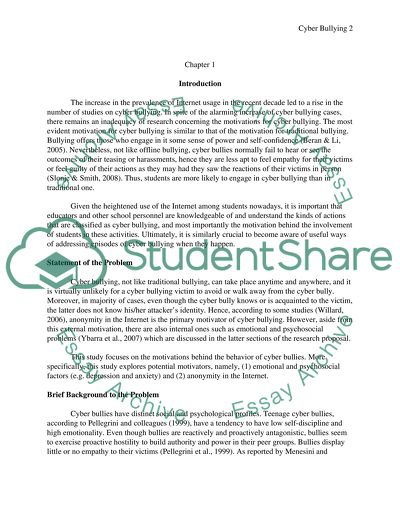Cite this document
(“The Effect of Emotional and Psychosocial Difficulties and Anonymity in Research Proposal”, n.d.)
Retrieved from https://studentshare.org/gender-sexual-studies/1422584-the-effect-of-emotional-and-psychosocial-difficulties-and-anonymity-in-online-interaction-on-the-willingness-of-teenagers-to-engage-in-cyber-bullying
Retrieved from https://studentshare.org/gender-sexual-studies/1422584-the-effect-of-emotional-and-psychosocial-difficulties-and-anonymity-in-online-interaction-on-the-willingness-of-teenagers-to-engage-in-cyber-bullying
(The Effect of Emotional and Psychosocial Difficulties and Anonymity in Research Proposal)
https://studentshare.org/gender-sexual-studies/1422584-the-effect-of-emotional-and-psychosocial-difficulties-and-anonymity-in-online-interaction-on-the-willingness-of-teenagers-to-engage-in-cyber-bullying.
https://studentshare.org/gender-sexual-studies/1422584-the-effect-of-emotional-and-psychosocial-difficulties-and-anonymity-in-online-interaction-on-the-willingness-of-teenagers-to-engage-in-cyber-bullying.
“The Effect of Emotional and Psychosocial Difficulties and Anonymity in Research Proposal”, n.d. https://studentshare.org/gender-sexual-studies/1422584-the-effect-of-emotional-and-psychosocial-difficulties-and-anonymity-in-online-interaction-on-the-willingness-of-teenagers-to-engage-in-cyber-bullying.


